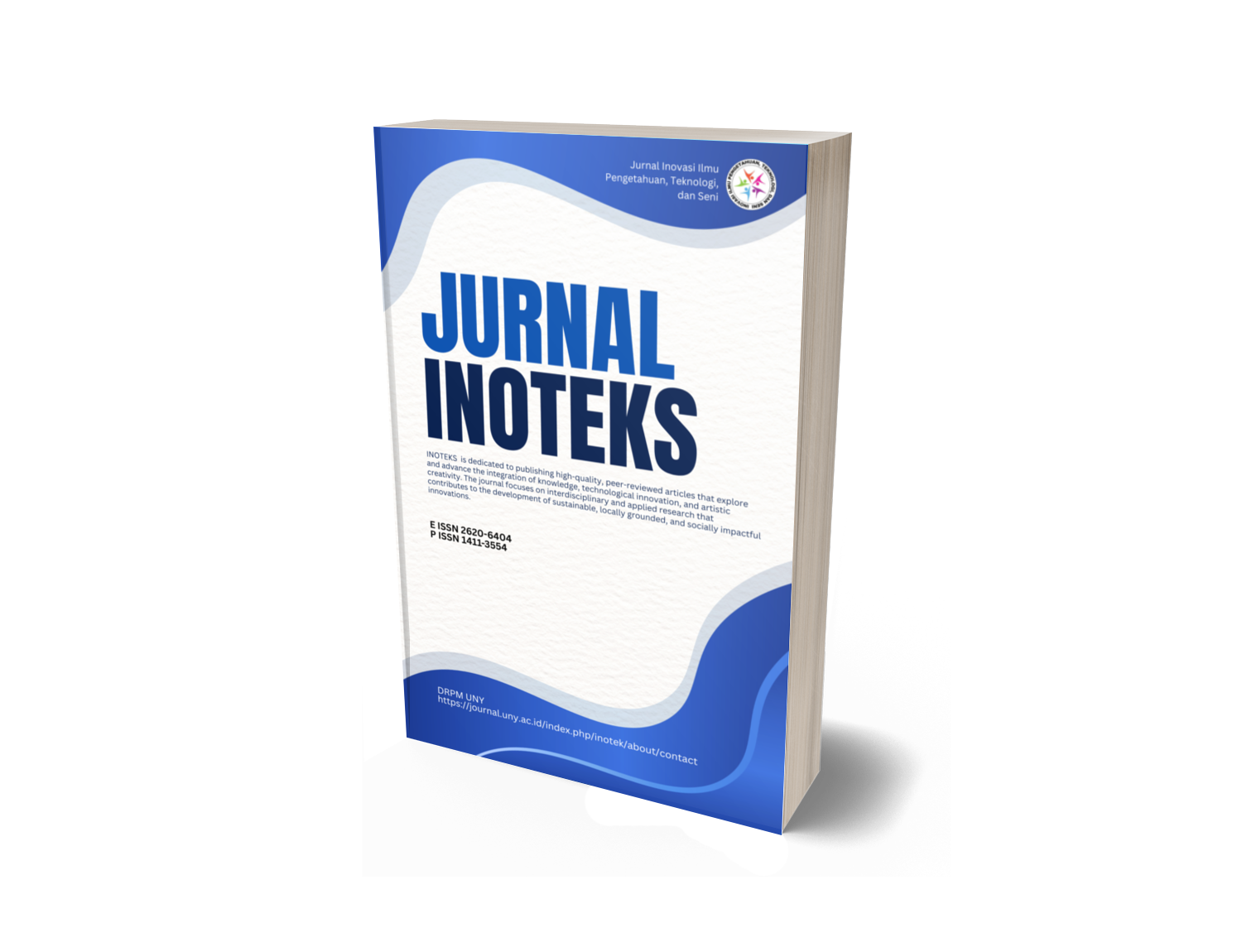PEMANFAATAN LIMBAH KULIT UDANG SEBAGAI BAHAN BAKU PEMBUATAN MEMBRAN ULTRAFILTRASI
DOI:
https://doi.org/10.21831/ino.v13i2.41Abstract
Abstract
This research was aimed to study the made of chitosan membrane.
The chitosan membrane was made from industrial waste of prawn packing
factory. The prawn husk was extracted to become chitin before it was then
transformed to chitosan. In order to make a membrane, the chitosan was
mixed with an acetic acid solution using magnetic stirrer. The mixed of
chitosan and an acetic acid solution was doing for 24 hour to make sure the
solution are homogenic. After that, chitosan solution was stored to glass
plate 10x10 cm. The glass plate that have been with chitosan solution then
dried for 48 hours. A Chitosan Membrane that have made was keeped with
the plate until it used.
Keywords: chitosan membrane, industrial waste
This research was aimed to study the made of chitosan membrane.
The chitosan membrane was made from industrial waste of prawn packing
factory. The prawn husk was extracted to become chitin before it was then
transformed to chitosan. In order to make a membrane, the chitosan was
mixed with an acetic acid solution using magnetic stirrer. The mixed of
chitosan and an acetic acid solution was doing for 24 hour to make sure the
solution are homogenic. After that, chitosan solution was stored to glass
plate 10x10 cm. The glass plate that have been with chitosan solution then
dried for 48 hours. A Chitosan Membrane that have made was keeped with
the plate until it used.
Keywords: chitosan membrane, industrial waste
Downloads
Published
2009-11-17
How to Cite
Kusumawati, N. (2009). PEMANFAATAN LIMBAH KULIT UDANG SEBAGAI BAHAN BAKU PEMBUATAN MEMBRAN ULTRAFILTRASI. INOTEKS: Jurnal Inovasi Ilmu Pengetahuan,Teknologi, Dan Seni, 13(2). https://doi.org/10.21831/ino.v13i2.41
Issue
Section
Articles
Citation Check
License
- Authors certify that the work reported here has not been published before and contains no materials the publication of which would violate any copyright or other personal or proprietary right of any person or entity.
- Authors transfer or license the copyright of publishing to Jurnal Civics: Media Kajian Kewarganegaraan to publish the article in any media format, to share, to disseminate, to index, and to maximize the impact of the article in any databases.
- Authors hereby agree to transfer a copyright for publishing to Jurnal Civics: Media Kajian Kewarganegaraanas a Publisher of the manuscript.
- Authors reserve the following:
- all proprietary rights other than copyright such as patent rights;
- the right to use all or part of this article in future works of our own such as in books and lectures;
- use for presentation in a meeting or conference and distributing copies to attendees;
- use for internal training by author's company;
- distribution to colleagues for their research use;
- use in a subsequent compilation of the author's works;
- inclusion in a thesis or dissertation;
- reuse of portions or extracts from the article in other works (with full acknowledgement of final article);
- preparation of derivative works (other than commercial purposes) (with full acknowledgement of final article); and
- voluntary posting on open web sites operated by author or author's institution for scholarly purposes, but it should follow the open access license of Creative Common CC BY-NC-SA License.









